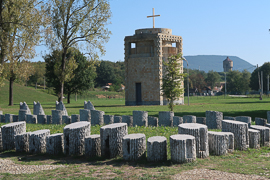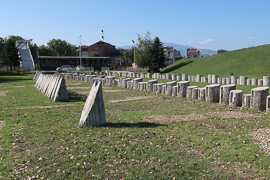On 21st October 1941, the German Wehrmacht slaughtered thousands of civilians in Kragujevac, Serbia, to revenge dead and wounded soldiers. The exact numer of victims is uncertain – Germany named 2,300, while 2,700 are definitely named and confirmed. There are, however, much higher estimates. During my Davis Cup weekend stay in nearby Kraljevo, I visited the impressive museum and nextby memorial park.
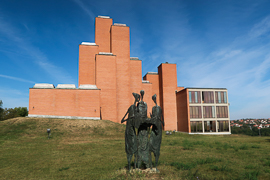



21st October Museum – Location & Admission
The 21st October Museum is located in the heart of a huge park area, which also hosts the Spomen Park (Memorial Park). The building is very characteristic, so that you really cannot miss it. Entrance to the museum is 100 RSD, which is about 0.80 EUR and thus an absolute bargain. The park area is free entrance and parking and accessible all day (used by the locals a lot for recreation). The museum opening times are from 9am. to 6pm. Monday to Saturday. On Sundays, the museum closes at 4pm. You should have sufficient time, though, as the museum and walking the whole Memorial park may easily be 2.5 to three hours.
21st October Museum – The Museum
The museum has two floors. You start your visit on the basement level, where you are majorly facing paintings of Petar Lubarda. The first one is a major one, Stop Bloodshed, Stop Killing, which is showing all aspects of the massacre. The following paintings show aspects which have already been shown in that key exhibit. The base level concludees with a very pathetic statement of Nicola Tesla, one of the most famous Serbians. The scientist praises how that his countrymen kept their spirit despite being slaughtered by the Germans.
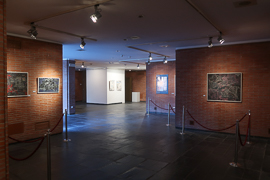







Faces and Names on First Floor
The beginning of the exhibition is very well selected and gives a depressive overall feeling. There some board on the way up that give you historical background like the political situation at that time. Afterwards, the victims become faces. One movie-like exhibit continuously reads names of the victims. Apart from that, there are belongings and farewell letters of the Serbians murdered. The most impressing room looks like a dark room with many lights. In fact each light names one victim, many combined with a picture. In addition, there are three sculptures, all made of military material found around the area.






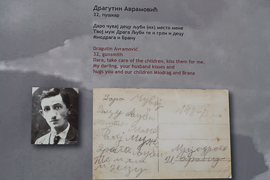

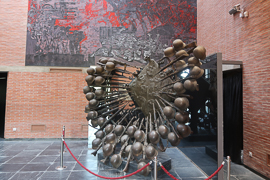









21st October Museum – Memorial Park
The nowadays Memorial Park is not only the place where the massacre happened, it also hosts ten sculptures along a walkway which topic aspects of it. I assume the full walk to take some 90 minutes – I took a shortcut after the sixth monument which lasted roughly one hour.
The first monument is located in front of the museum. Afterwards there are sculptures called like The Moment of Pain and Defiance or Crystal Flower. The most famous monument is the V-shaped Interrupted Flight, which reminds of the killed students and professors. Another impressive monument is A Hundred for One, which relates to the fact that the German army officially killed one hundred civilians for one German dead solider. In addition, they killed fifty people for a wounded one.



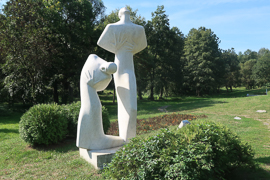








21st October Museum – My View
The Kragujevac 21 October Museum together with the Memorial Park is an absolutely impressing place. The design of the museum is really well done. These parts of the Nazi Germany cruelties are not that much in focus any more outside former Yugoslavia, so the museum does a great job. Giving the victims names and having their pictures increases its strong message. The sculpture park is also a very catching part of your visit, so that I would recommend to take your time for tha as well. It might not be suitable for minor children though – there are original pictures of the executions and you pass by the mass graves.
Similar Locations
As the massacres happened similarly in other places of the region as well, there are memory parks and museums in multiple places around. Here are some pictures of a monument in Kraljevo, which I visted before Davis Cup Sunday and the Memorial Cemetery, where the local executions happened.





